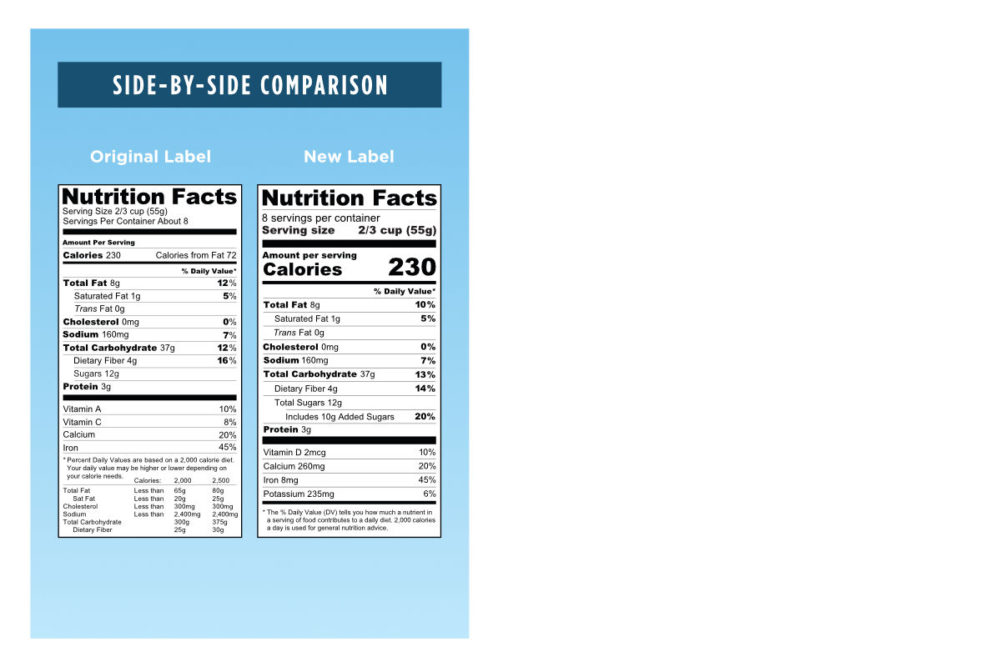The U.S. Food and Drug Administration is issuing a final guidance to help manufacturers of packaged foods comply with the FDA's updated Nutrition Facts labeling regulations. The final guidance addresses serving sizes of foods, including single-serving foods and other foods that can reasonably be consumed at one eating occasion and require dual column labeling.
Compliance with the updated Nutrition Facts labeling regulations is required by Jan. 1, 2020, for manufacturers with $10 million or more in annual food sales, while manufacturers with less than $10 million in annual food sales will have an additional year to comply.
During the first six months following the Jan. 1, 2020 compliance date, FDA plans to work cooperatively with manufacturers to meet the new Nutrition Facts label requirements and will not focus on enforcement actions regarding these requirements during that time.
"With the introduction of the new Nutrition Facts label, a variation that consumers are seeing is the dual column label for some foods that can reasonably be consumed in one meal or snack. This label has two columns, one for listing the nutritional facts related to a single serving and one listing the nutritional facts for the contents of the entire package,” explains Claudine Kavanaugh, Ph.D., MPH, RD, director of the Office of Nutrition and Food Labeling in the FDA's Center for Food Safety and Applied Nutrition.
"In the guidance we issued, we are helping answer some of the questions most commonly asked by industry about dual column label and serving size issues, including when dual column labeling is required, the definition of a single-serving container, how to determine the number of servings in a food product, and how these labels should be formatted for some products that have limited space for nutrition labeling.
"The new Nutrition Facts label has updated serving sizes for many foods. We know that Americans are eating differently, and the amount of calories and nutrients on the label is required to reflect what people actually eat and drink – not a recommendation of what to eat or drink. The new label, including this dual column layout, will drive consumers' attention to the calories and Percent Daily Value of nutrients that they are actually consuming."

